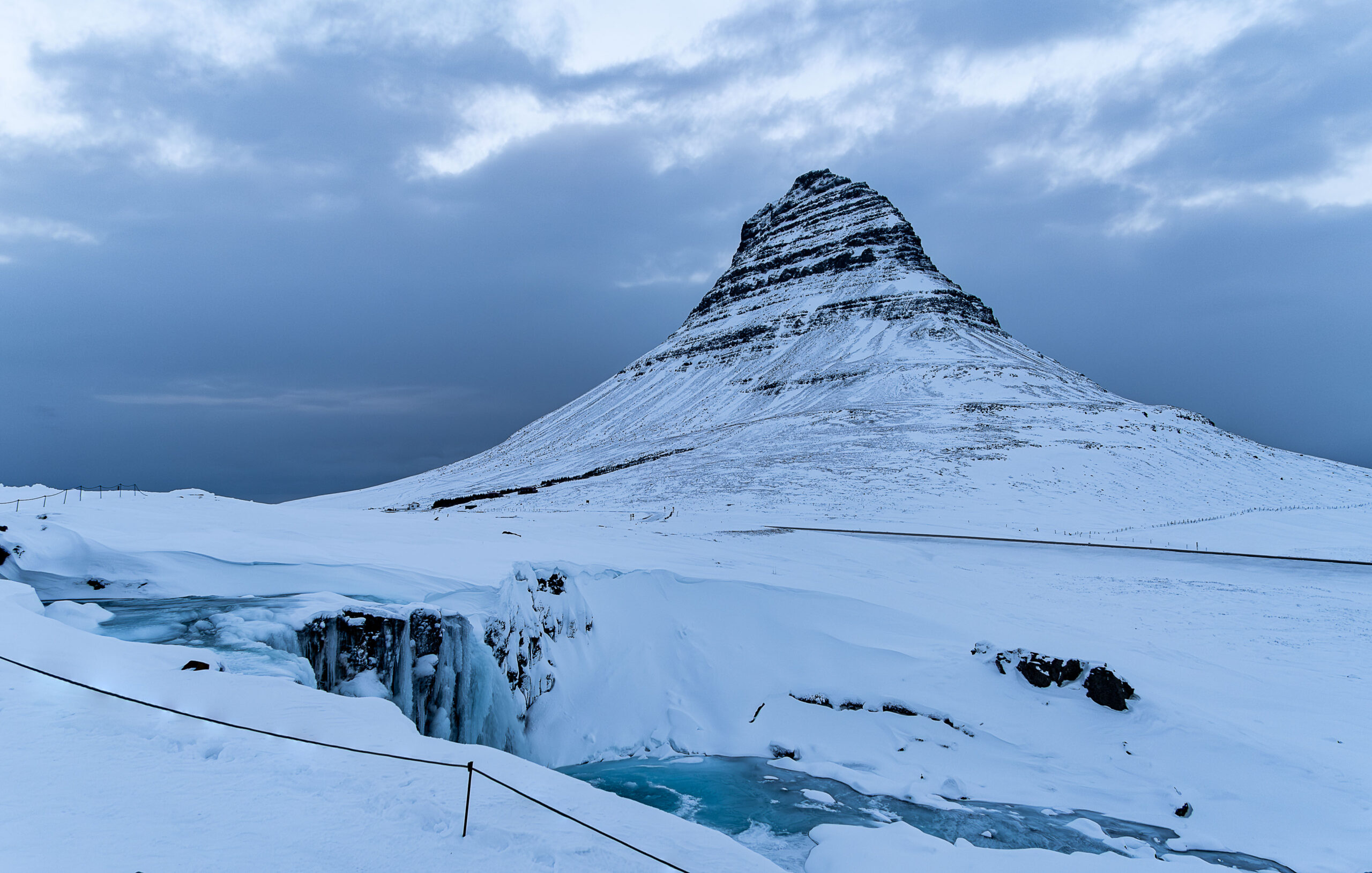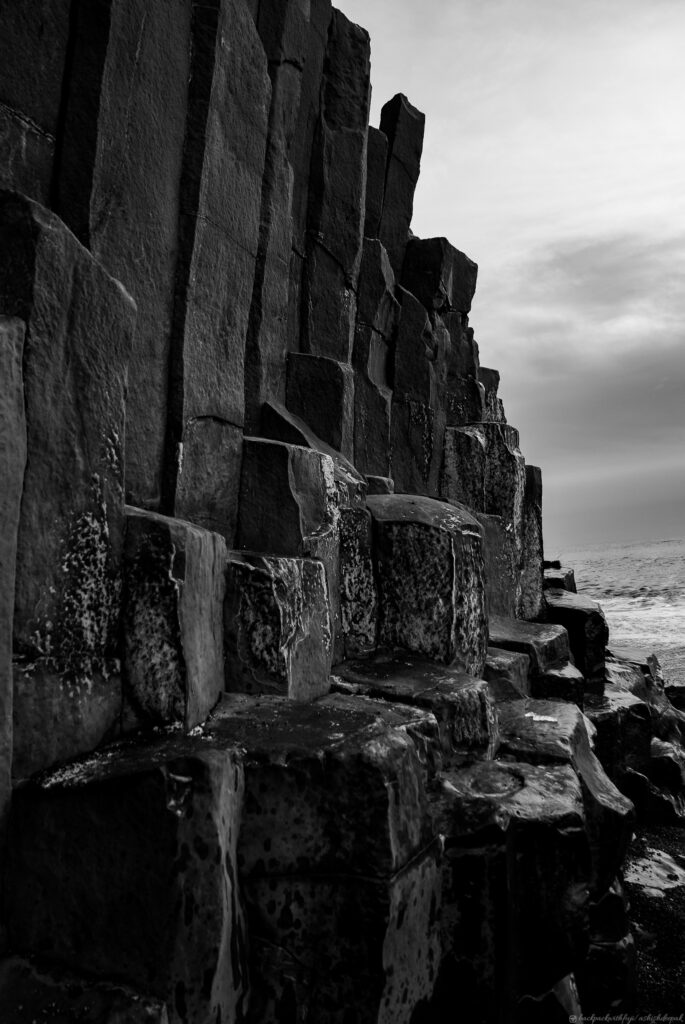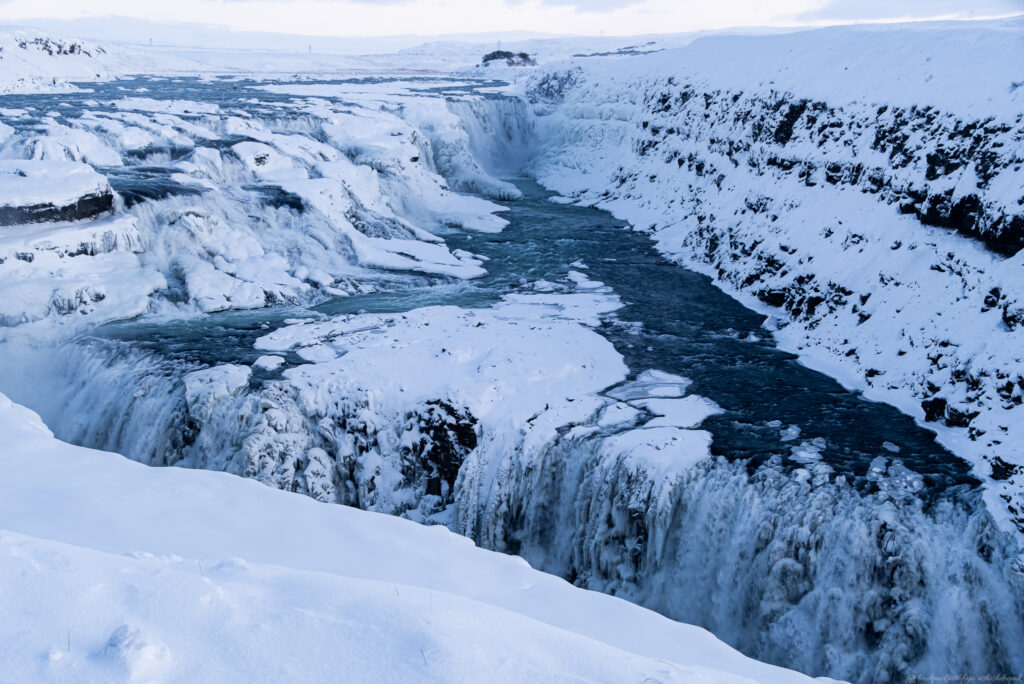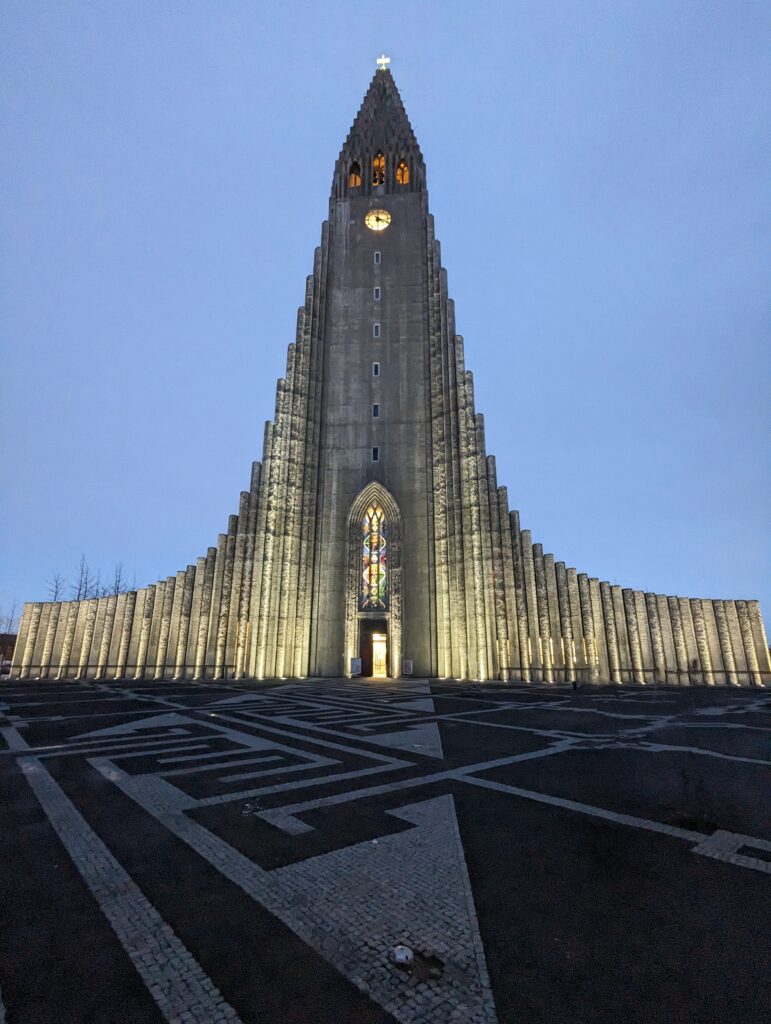My last day of the tour of Iceland. Initially, I hadn’t planned anything for the last day. After travelling with BusTravel Iceland for the past two days, I decided to take up their tour of Snæfellsnes Peninsula. The peninsula is named after the Snæfellsnes volcanic belt and the Snæfellsjökull volcano, regarded as one of the symbols of Iceland. The mountain is also known as the setting of the novel Journey to the Center of the Earth by Jules Verne.
Like the previous day, we started our journey early in the morning. After travelling for almost two hours, our guide made an important announcement regarding severe weather alerts and road closures by the government. As we entered the peninsula, winds started picking up knots and we could feel the winds pushing the bus sideways. Our guide ensured that we had the most experienced bus driver at our disposal.
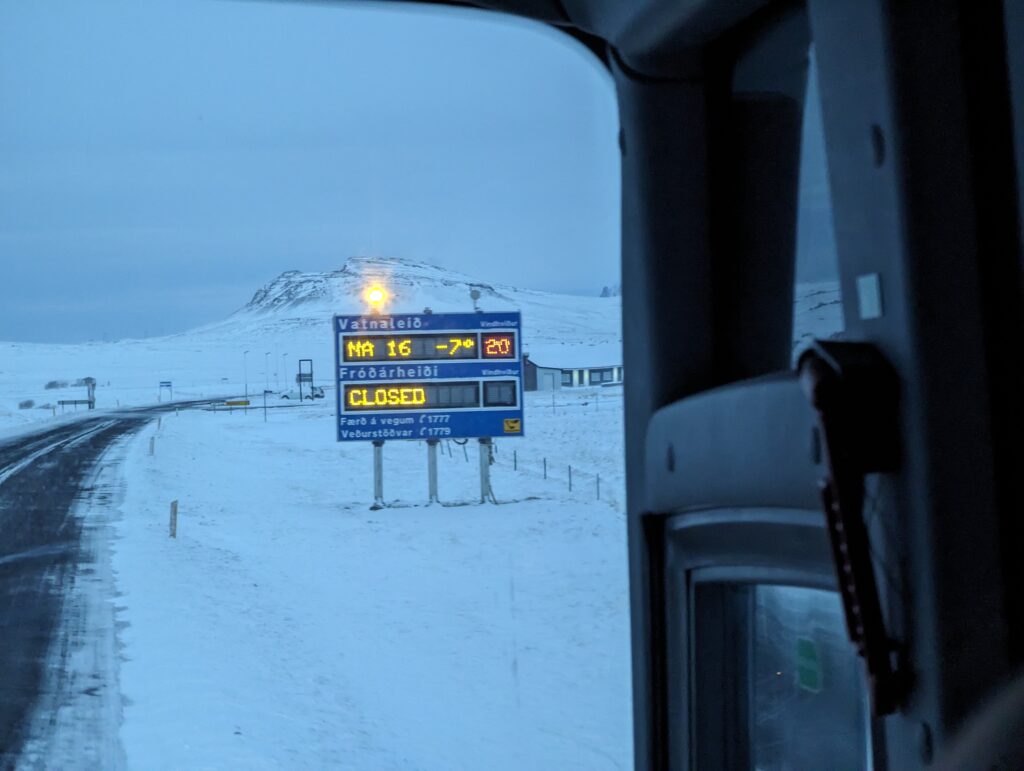
Lucky for us, the road was not closed. Our first stop was to get a glimpse of a hidden waterfall- Selvallafoss waterfall, more commonly known as “Sheep’s Waterfall”. It is surrounded by a beautiful landscape and in summer, one can walk behind the waterfall. As it was a barren land, the landscape was filled with snow up to knee height and the storm was making it tough to walk. From the car parking area that is near the waterfall, from there you can hike to the Selvallafoss waterfall.

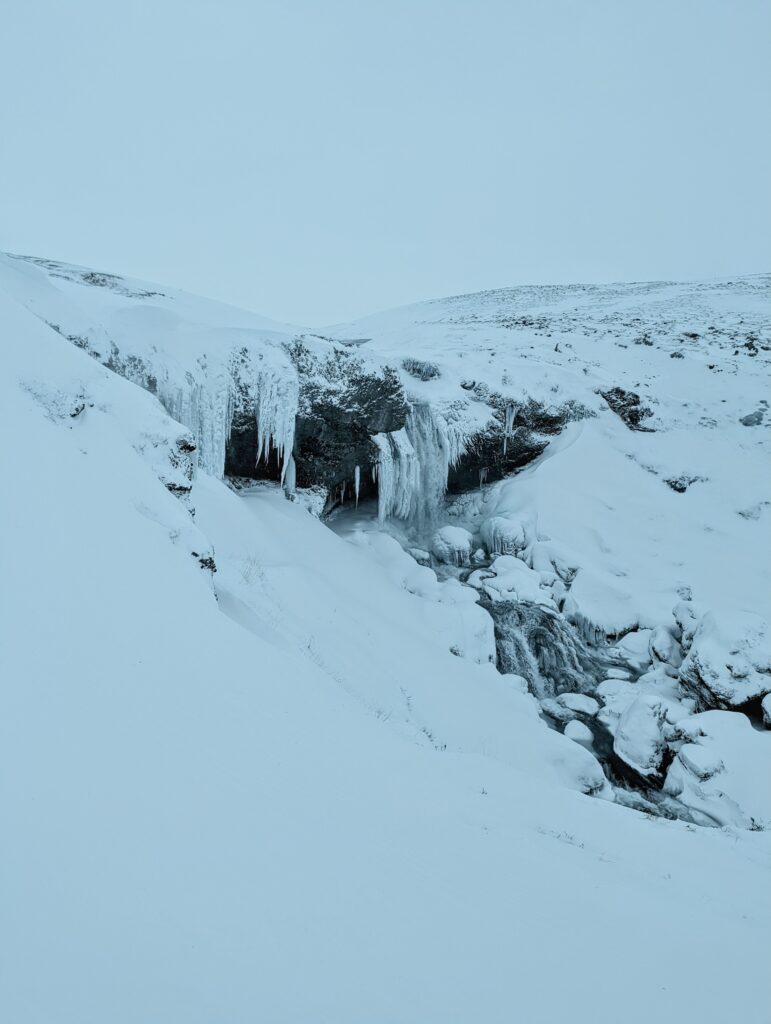
Our next stop was Kirkjufell mountains. To reach Kirkjufell we pass through a small town called Grundarfjörður where the movie Secret Life of Walter Mitty was shot. This is the road where the character of Ben Stiller goes in search of his friend Sean Penn. After a small break in Grundarfjörður, we headed towards Iceland’s most photographed mountain.
Kirkjufell- the most photographed mountain in Iceland
This distinctive arrowhead-shaped mountain stands only 463m high but appears more imposing as it seems to pierce through the otherwise flat surrounding landscape. Kirkjufell means church mountain in Icelandic.
Within walking distance of Kirkjufell is the serene and perfectly located waterfall Kirkjufellsfoss, or ‘Church Mountain Falls’, an excellent subject for photographers who can easily frame the mountain in the background. If you have extra time to spend, you can walk to the base of the mountain to find a clear water lake. On calm and clear days, this lake reflects a perfect mirror image of Kirkjufell, only adding to the fantastic photo opportunities around this area.
Fans of the HBO series Game of Thrones will recognise Kirkjufell as a shooting location from Season 7 of Game of Thrones. The mountain is showcased in the ‘Beyond the Wall’ episode when Jon Snow, The Hound, and Jorah Mormont, among others, brave the wilderness in hopes of catching an undead wight.
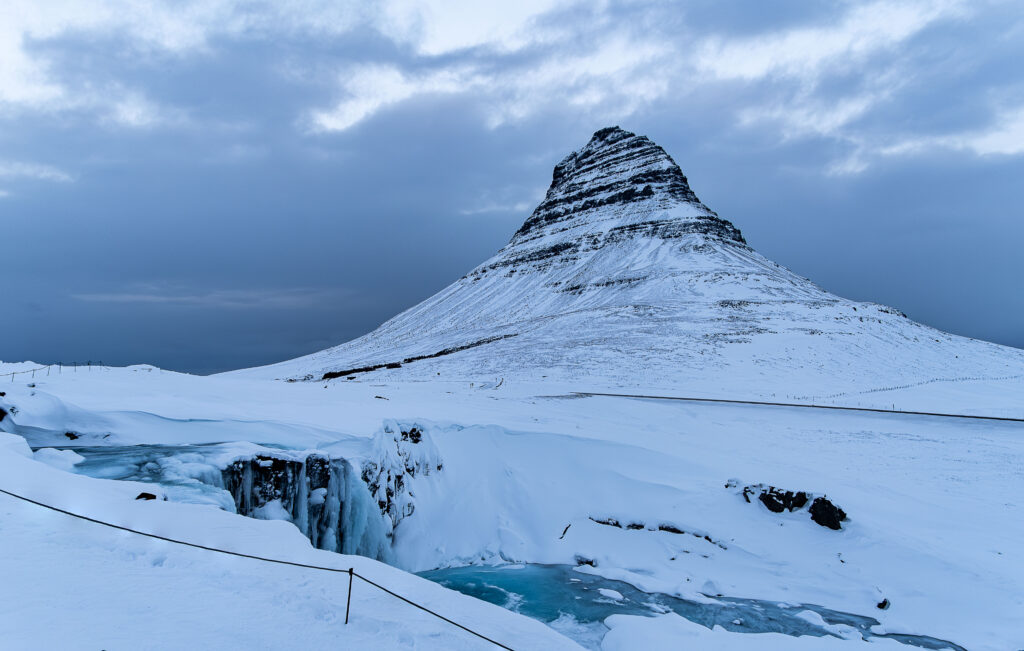
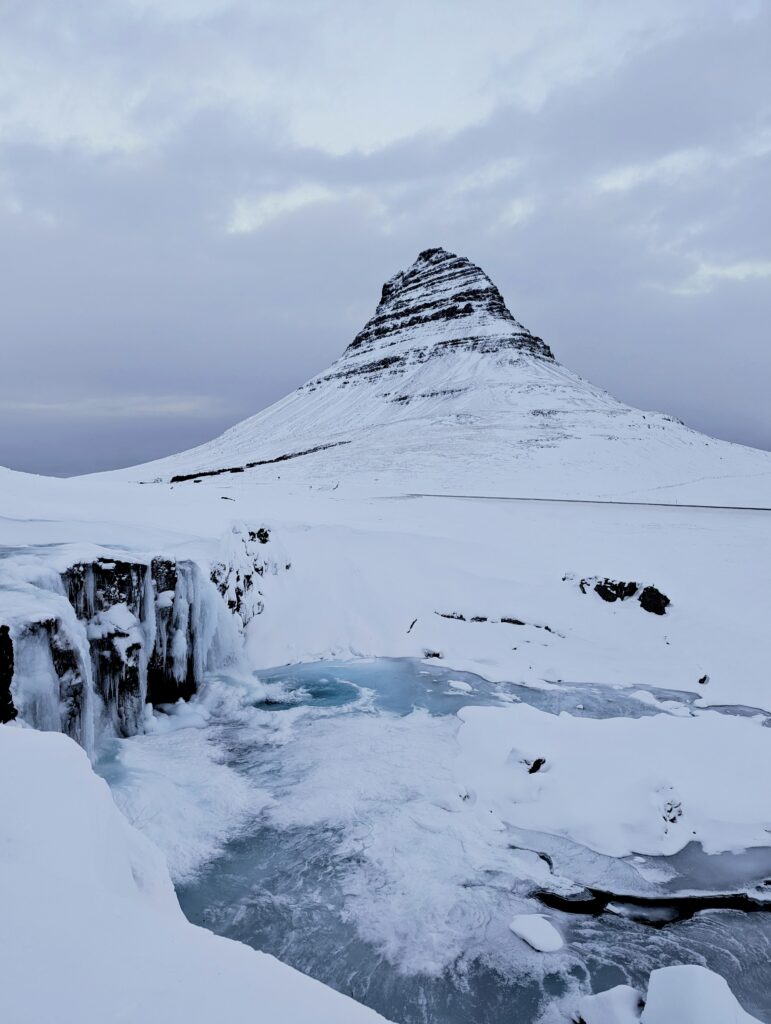
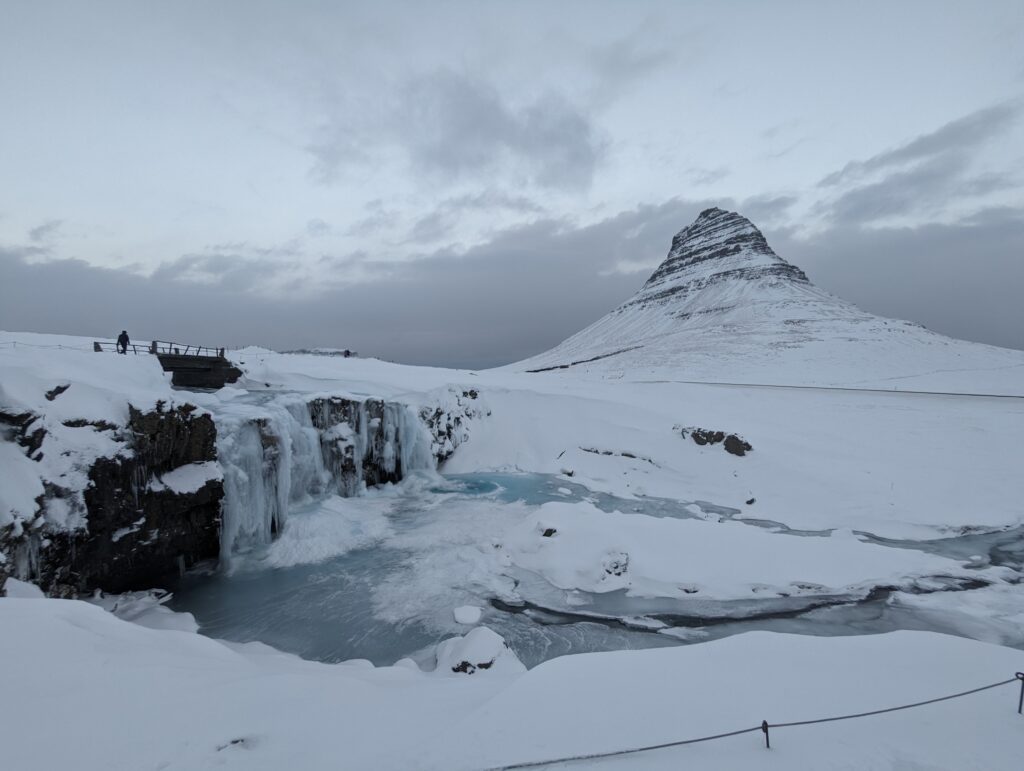
As the weather was getting worse, our guide decided to skip the next two locations as it could be risky and since it had snowed heavily, the path could be slippery as we had to walk down from the paved road to get to the black beach. We grabbed our lunch and headed to our next location Lóndrangar Pinnacles. We were not allowed to go to the edge of the cliff.
Once a volcanic crater, all that remains after aeons of ocean battering are two great pillars upon a cliff, one 75 metres (246 ft) high and the other 61 metres (200 ft). Their dramatic scale has earned this incredible formation the nickname ‘the Rocky Castle.’
On the way, you would also come across the Malarrif Lighthouse.
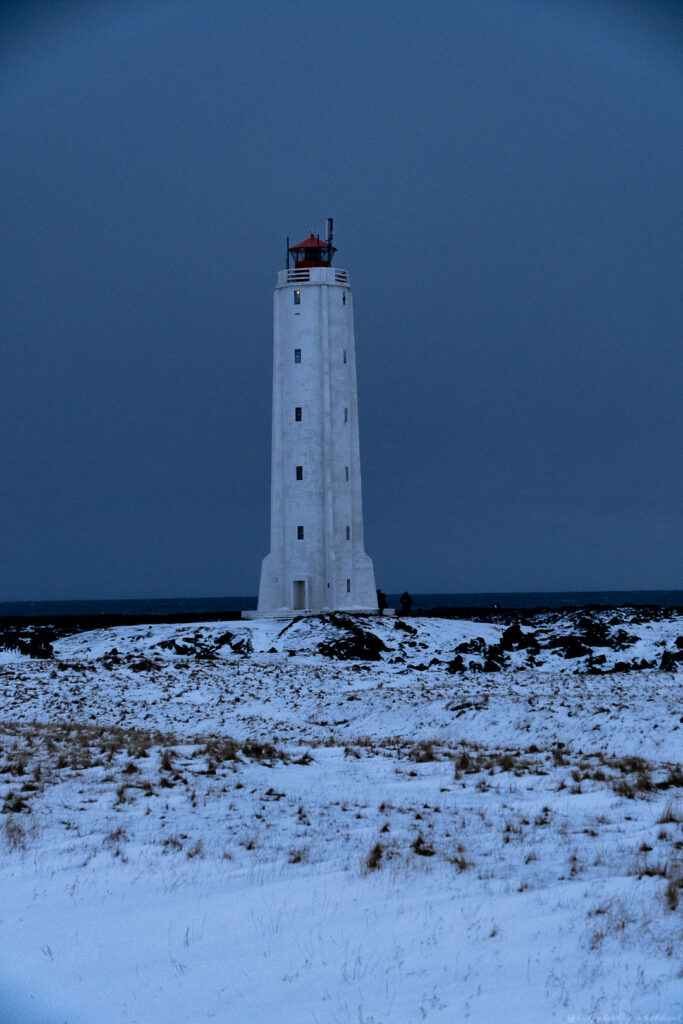
We continued our journey to the next stop- Arnarstapi Cliffs. Close to the cliffs, we stopped at a quirky-looking monument dedicated to Bardur. The statue is his interpretation of the giant character that dominates the area around Snæfellsjökull glacier.
Bárður, the half man half troll
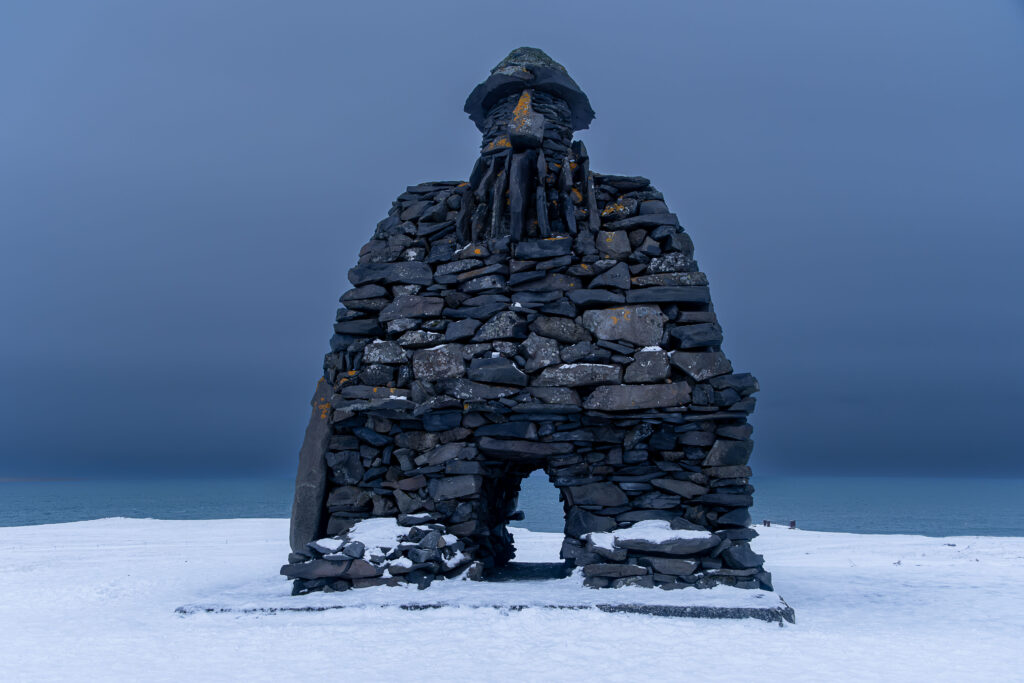
Bárður, who was said to be half-giant and half-human, lived on the Snæfellsnes Peninsula. Settled in Iceland after fleeing the tyranny of Harald king in Norway. One can walk under the monument. Icelandic sculptor Ragnar Kjartansson created and unveiled the statue, which was based on the Bárðar Saga Snæfellsás, in 1978. It stands 6 meters tall and depicts Bárður holding a large rock, which symbolizes his connection to the earth and his strength. The statue has become a popular tourist attraction and is often visited by those who are interested in Icelandic folklore and mythology. Finally, he gave away all his land and all his earthly belongings and vanished into the Snæfellsnes Glacier. In the glacier, rumor has it, that he built an ice cave more in line with his troll or giant side. There, he became known as the Guardian Spirit of Snæfell as the locals worshipped him and looked at him as their saviour
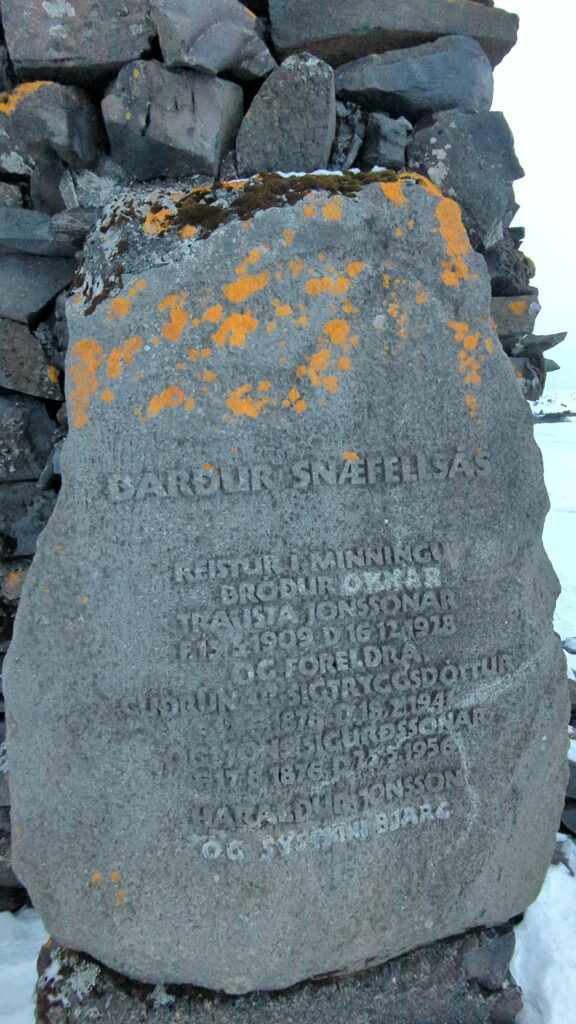
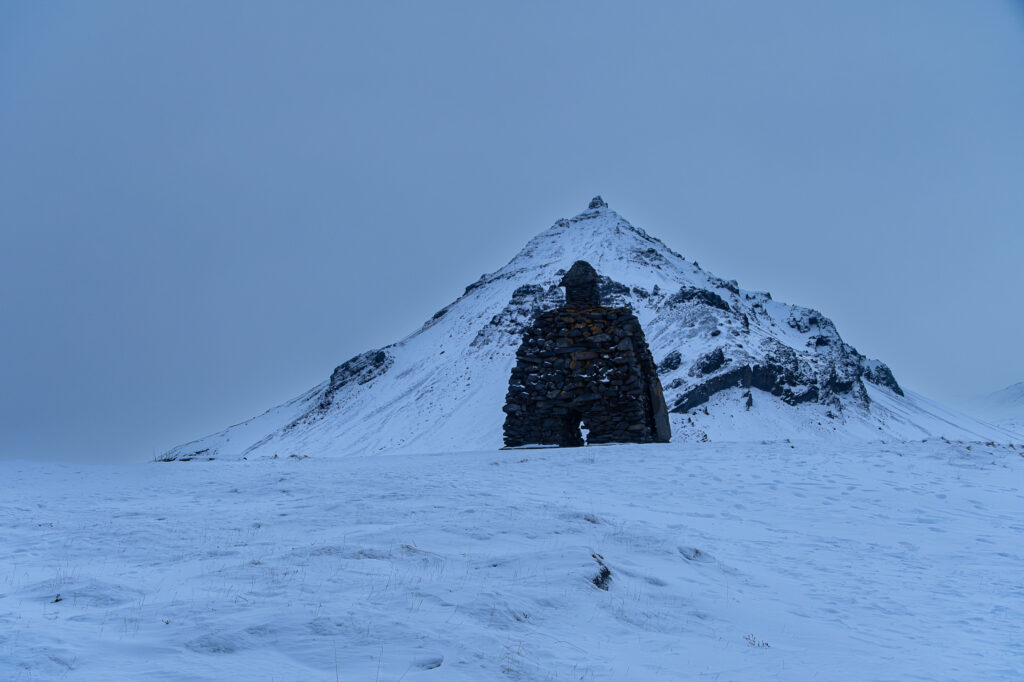
After spending some time at the monument, we walked towards the Arnarstapi Cliff Viewpoint. The path is covered in thick snow during December, so be careful while walking.
Arnarstapi
The region was popular with settlers due to its natural harbour, meaning fishing in the rich herring grounds of the surrounding waters was easy. Denmark invested a lot of money into Arnarstapi throughout the eighteenth and nineteenth centuries. Many of the resulting buildings still stand today, being some of the oldest in the country, such as the Danish Prefect’s Residence, which was built in the 1770s.
Fishing and trade remain vital parts of the economy, but they now play second fiddle to tourism and services. The village has essential services for those travelling on the peninsula, a wide array of accommodation options, and tour companies operating from it.
The cliffs here teem with bird life and are an important nesting spot in summer.
Striking basalt columns and curious rock formations are interlaced with thin walkways caused by years of erosion as the land fights against a sea that wants to reclaim it. Walk on the stone bridge below which the sea has eroded the cliff into a stone arch. This is another popular subject for photographers. It’s not safe to walk over the bridge in winter.
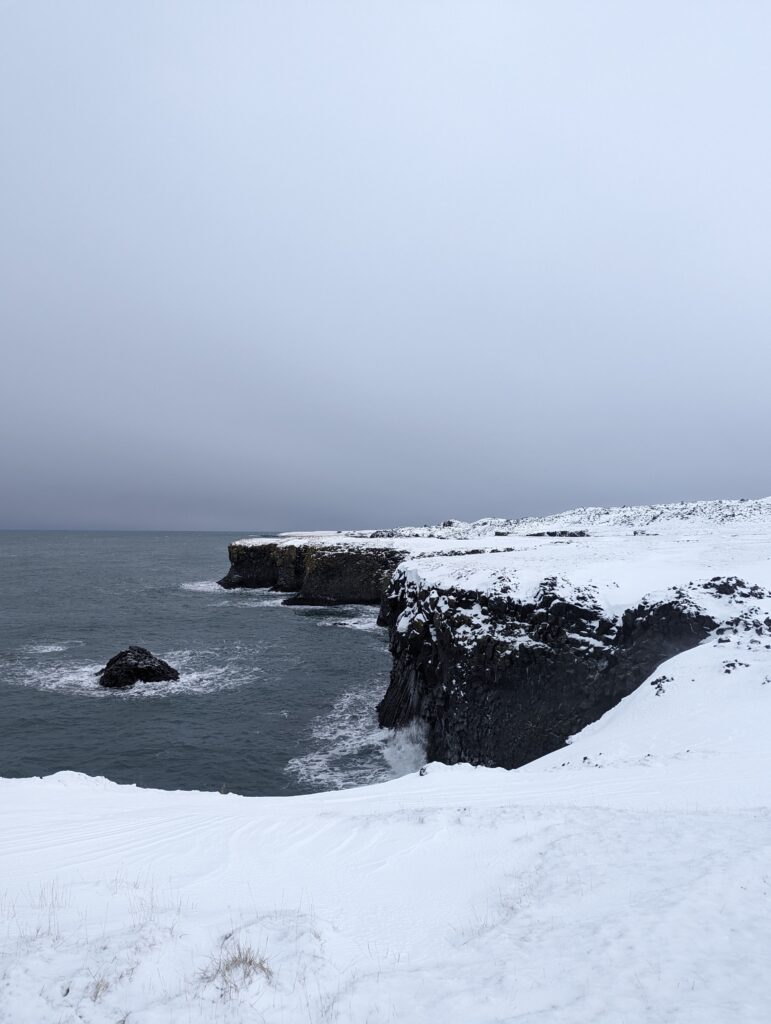
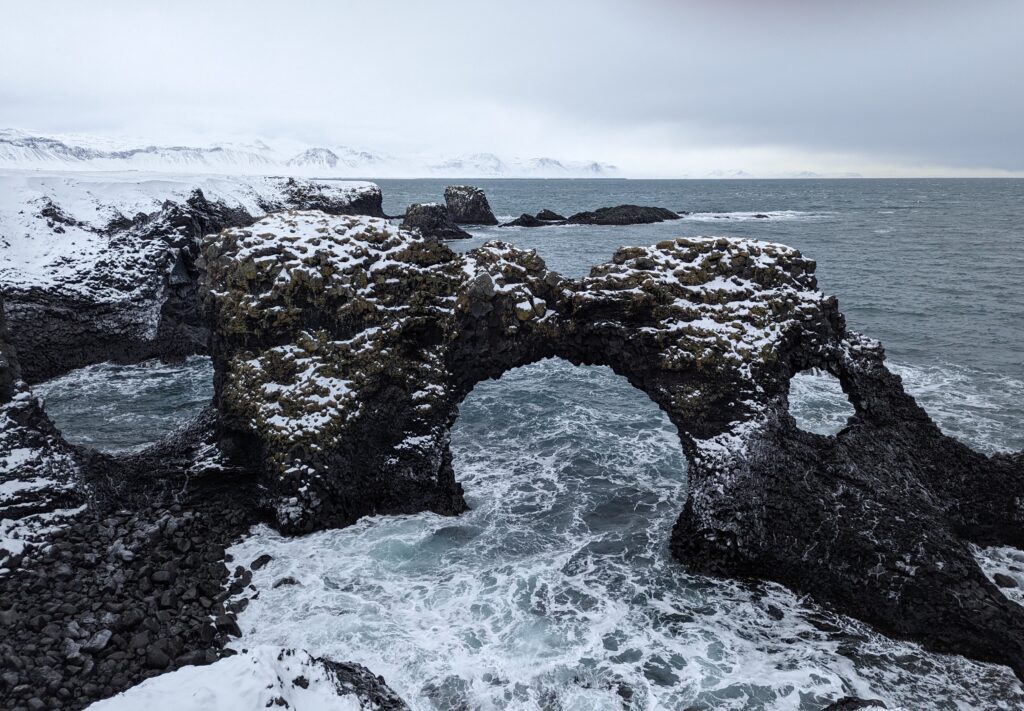
After spending some time taking in the cliff views, we headed to our last stop- Black church.
Budir Balck Church
The most famous black church in Iceland, Budir black church, or as it is known locally, Búðakirkja, was originally built in 1848, and restored in the 1950s and again in the 1980s. A popular subject for photographers, professional and amateur alike, the striking black church at Budir contrasts sharply against the remote and desolate landscape on which it sits, making it a great subject for photos.
As we reached the Black Church, the storms had calmed down. We could see a more violent storm coming from afar. On a clear day, the surrounding landscape adds more beauty to the church.
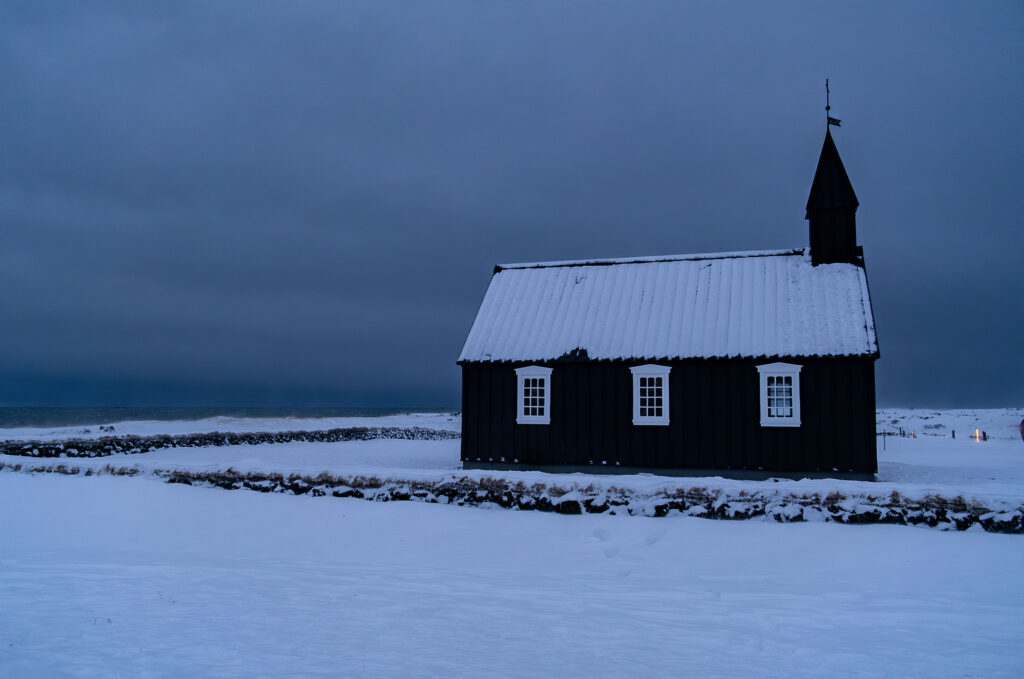
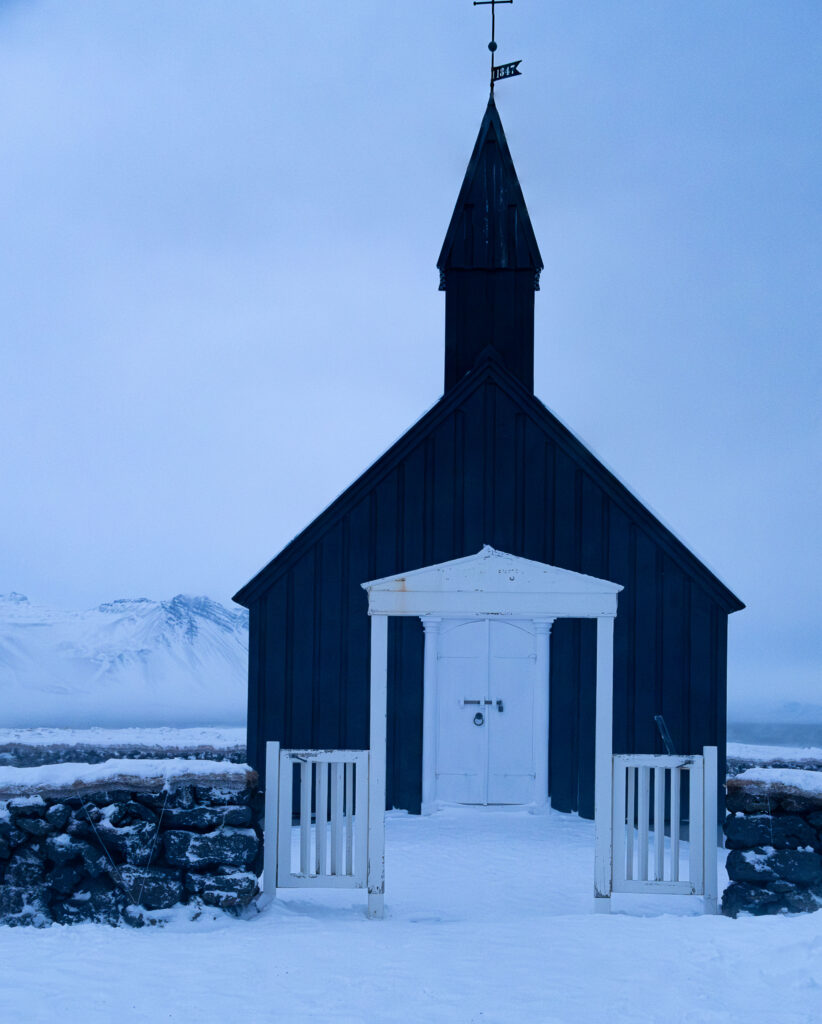
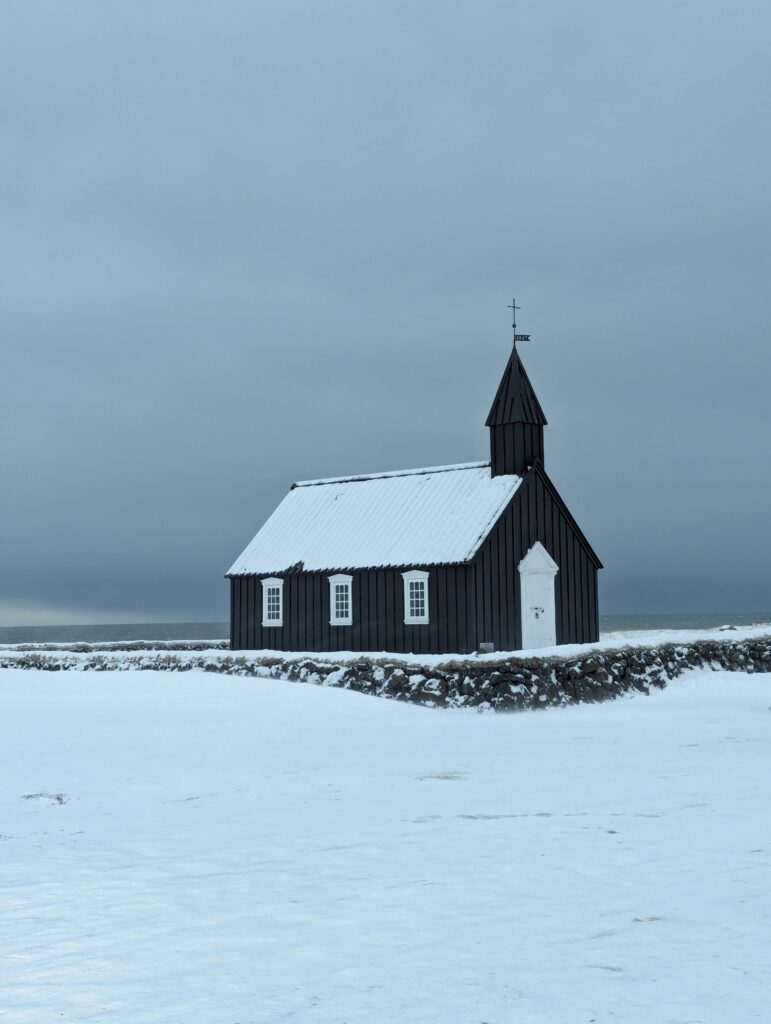
We had almost a 3-hour journey ahead of us back to Reykjavik and now the storms were violent. Roads can be hardly seen and we could feel the slippery roads. But our driver Tomek was keeping us safe with his experience in these harsh conditions. After we had travelled halfway, our driver received a call from another driver from the same company, whose bus got derailed because of the storm. Our guide Jona announced that we would have to travel back again close to Arnarstapi to pick up the stranded tourists in the minibus.
Our driver braved the storm and we picked up the stranded tourists and the driver and continued our journey back to Reykjavik. The experience is tough to explain and Iceland’s weather is unpredictable as people mention it.
Here is a small video of the storm we witnessed on that day.
Looking forward to travelling once again to Iceland in Summer to explore the highlands and locations that were missed in this Adventure. Do look into BusTravel Iceland for tours.

